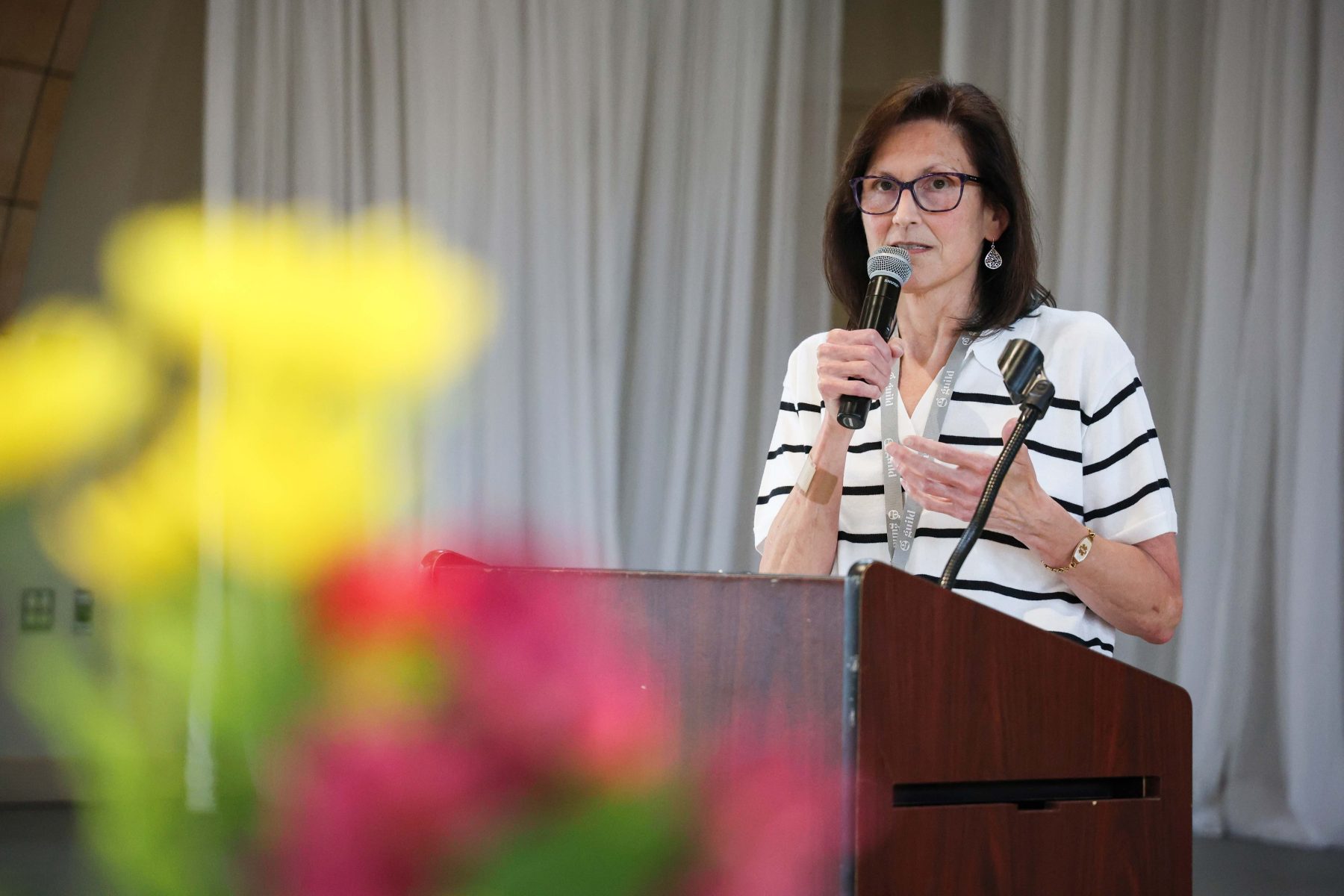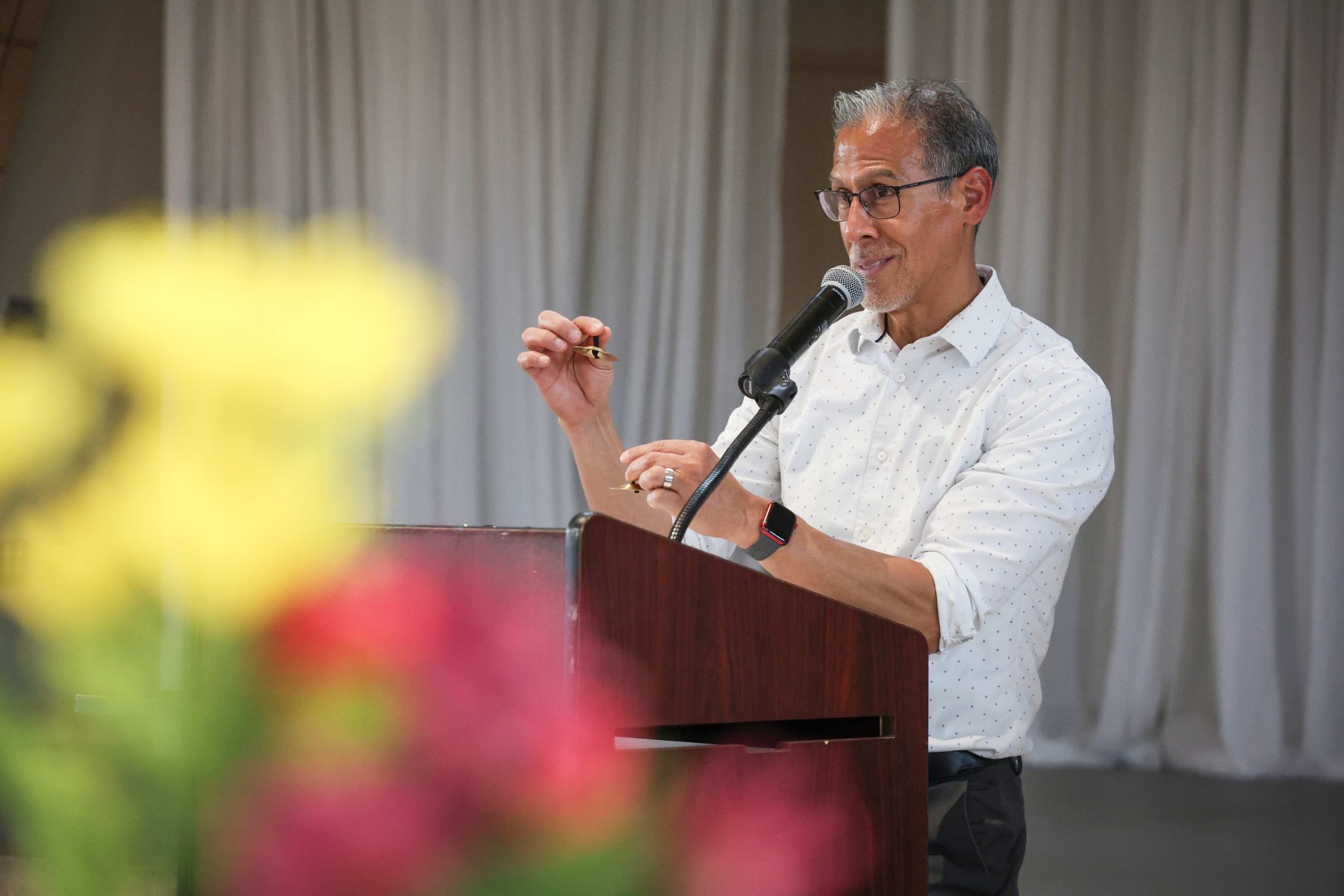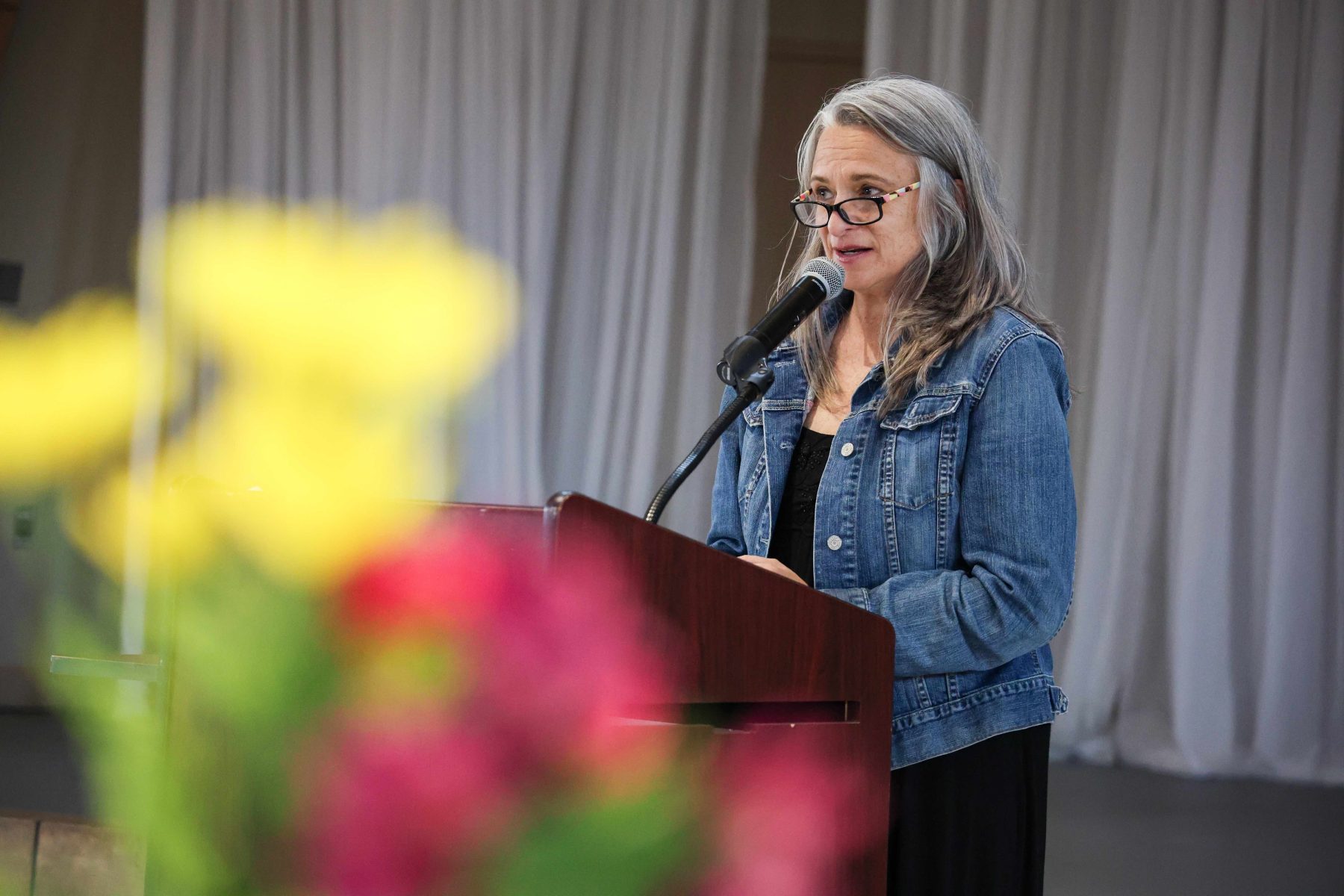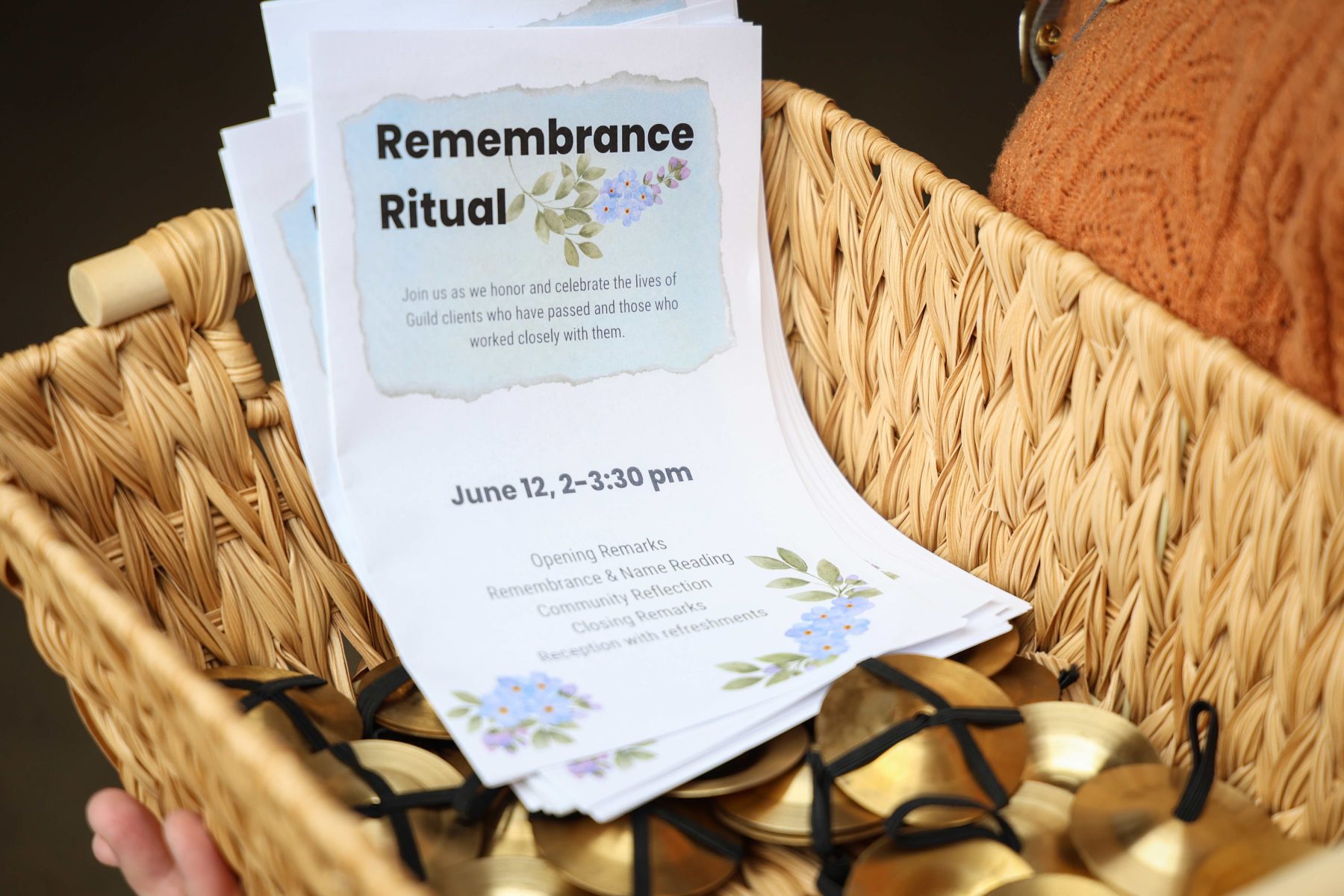By John Adams
Grief can be incredibly isolating, and it doesn’t show up the same way for everyone. Sometimes, it’s tears. Sometimes, it’s silence. But one thing is true for all of us: Grief is part of the human experience. It connects us all.
Each of us have experienced grief. It’s a way for us to say, “I see you.” That truth was one of the core inspirations behind shaping our organization’s Remembrance Ritual. Our team wanted to promote a space intentionally designed to honor the loss of Guild clients, invite vulnerability, and help us heal in community.
When we were first dreaming up this ritual, we wanted to create a space where people could feel deeply without needing to explain themselves or hold anything back. We asked ourselves: What does it look like to structure something that helps people safely access their emotions? That led us to build the experience around four pillars: invitation, remembrance, community, and epilogue.
Invitation is about setting the tone and saying out loud: “This is a safe space. You’re allowed to feel in any way you need.” We offer poetry and music to help bypass our intellectual brain and connect with the creative core. This creates a starting point and soft landing for people to open up, access, and connect with their emotions.
Then, we move into remembrance, where we speak the names and celebrate the lives of those lost. It’s one thing to remember someone quietly, and it’s something else entirely to speak their name in front of others and feel the collective honoring of their memory. There is power in this; speaking their names affirms they mattered, affirms they were seen.
The third pillar, community, is about giving voice to our grief. We invite folks to share their stories or simply be present with others who understand. I love this part, because it allows people to speak what’s on their hearts. Often, we don’t get the opportunity to “know” those we have lost. But when we do, something shifts. That sense of isolation and heaviness begins to fade. Sharing our memories with each other in a group brings connection, even if we do not know who is impacted by it.
And finally, we close with epilogue. This is where we assist in transitioning back to “real life” with another poem, another song, and symbolic actions that support healing, like placing flowers in the river or holding a rock of remembrance. It’s a gentle way to transition from a sacred moment back into everyday life without rushing the process. We want to remind everyone that these elements can be recalled at any time to honor our lost friends. When we see a flower that we sent downstream or the rock on our desks, we honor them still.




All of this came from a place of curiosity and care. I’ve had to explore a lot of my own resistance in this journey. I used to think, “I’m in a leadership role, so I can’t show emotion.” But I had to call myself out on that. That belief was something I made up based on how I thought a leader should be: cold and objective. It’s a rule I held for myself and didn’t apply to anyone else. I realize now how important it is to experience and model vulnerability, not suppress it. That is the full human experience. This connects me to everyone else.
If you’re someone who’s unsure about attending something like the Remembrance Ritual, I’d encourage you to gently ask yourself: What is the resistance about? Is it fear of crying (or being vulnerable) in front of others? Worry that it will be too much emotionally? That kind of curiosity, that kind of self-exploration can be powerful. When we get curious about what scares us, we can then start a relationship with it, understand it and perhaps make peace with it.
Grief is complicated. It evolves, shifts, and changes based on circumstances. But if we pull it in close, if we sit beside it, and get curious rather than push it away, it can become less scary. We begin to understand it. We learn how to live with it and find out what it needs, and also what we need. Once we’ve done this for ourselves, we can show up whole for others. Remember, in doing this we are not broken, deficient or weak. We are humans living a full human experience.
I’ve been in spaces where I needed to be alone in my grief, and I’ve been in others where I leaned into vulnerability and felt the healing that comes with support and connection. There’s no one right way. But in my experience, connection accelerates healing. Community gives us the courage to keep going. It reminds us we are not alone.
Life isn’t always fun or easy. I don’t think it’s supposed to be. There’s magic in the struggle, in asking ourselves hard questions, in exploring and learning who we are in the midst of pain. When we do that, when we face our grief head on, we become unshakable. We create a strong foundation on which to stand. Not because we’re numb to pain, but because we’ve learned how to feel it and walk through it.
That’s what the Remembrance Ritual is about: Showing up, feeling fully, and healing together.

